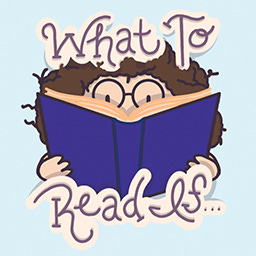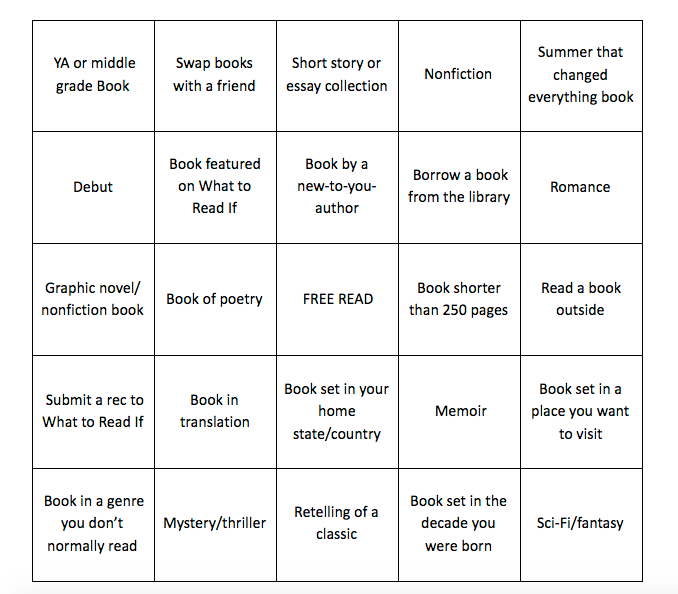This is the continuation of our Grow interview series, designed to share the nuts and bolts of how writers have gone independent and grown their audiences on Substack. It has been lightly edited for length and clarity.
We invited Elizabeth Held, who writes What to Read If, to share insights on how she grew the audience of her book recommendation newsletter from one person (herself) to 2,000+ readers over the course of the year.
What’s your Substack about in one sentence?
What To Read If is a weekly book recommendation newsletter dedicated to helping book lovers find their next great read.
What do you offer readers?
My goal is to help people cut through the noise and find the books they actually want to read—whether that’s a memoir, a mystery, or a romance. Each week, I provide subscribers with three book picks based on the news, pop culture, reader requests, and my own whims. I try to go beyond the bestseller lists and the books already earning buzz to highlight books readers may not have already heard of. I also make it a point to feature diverse writers and genres.
Growth by the numbers
Started Substack: November 2020
Free subscribers: 2,200
Why did you start What to Read If?
It started as a pandemic project. I sent my first issue to one person: myself. I wasn’t entirely sure people would want to read it. There are so many great places to get book recommendations. I wasn’t sure if there was space for one more, but I knew I wanted to force myself to write once a week, and a newsletter seemed like a good way to do that.
It’s cheesy, but I’ve always thought there was a certain magic in reading the right book at the right time. My goal when I launched was to help folks get that feeling, and I’ve succeeded. It makes my day whenever I get an email or a comment from a subscriber saying they loved a book I recommended.
Content strategy
Mondays: Book recommendations
I’ve stuck with the same formula since my first issue: three book recommendations, broken up by subheads. I occasionally feature a “bonus recommendation” or a guest recommendation.Every other Thursday: Q&As
My Q&As are normally transcribed interviews, although occasionally I feature email interviews. The Q&As offer a chance to understand everything that goes on to bring a book to life.
What has been a meaningful moment for the growth of your publication? How did that happen?
In February 2021, Ashley Holstrom of Crooked Reads featured What To Read If in a list of the best book newsletters for BookRiot, which led to more than 500 subscribers in a single day. Since then, it’s been slow and steady growth, with a few big bumps when I was featured in Strong Sense of Place, Politico, and a few other sites.
I wrote Ashley one email and didn’t stress when she didn’t respond. My theory is that gentle outreach and high-quality content would draw subscribers. I didn’t expect it to work that well.
What’s an example of a post that attracted a lot of readers?
I don’t have one post that really exploded. Instead, it’s been in steady spurts. I try to focus on engagement as well as the size of my list. I’d rather have a smaller, engaged audience than a big audience that doesn’t really care.
One of the best things I’ve done for engagement was my Summer Reading Bingo Challenge. I made a Bingo card with book-related prompts on it, and invited my subscribers to fill out the card over the course of the summer. Anyone who got five in a row was entered into a raffle for a gift certificate to the independent bookstore of their choice. Just about 15% of my subscribers submitted a card, and more played along without getting five in a row.
What’s the sharpest insight you can offer other writers about growing a Substack publication?
Before I launched my book Substack, I did a search to see who else was writing about books and reading on Substack and what I could learn from them. I found CrookedReads and BooksOnGif and immediately fell in love with both of them. When I launched, I dropped both of them a note saying I loved their work and had recently started my own newsletter. I figured best case, they would subscribe; worst case, they'd ignore me. Ashley Holstrom, who writes CrookedReads, subscribed after getting my note and a few months later featured me in the BookRiot article.
If I find someone talking enthusiastically about something I also love, I often write a quick note to introduce myself. People always like to hear that other people like what they're doing, and I think we're all craving connection, especially right now.
When I first launched my Q&A series, I featured people I knew in person or had previously interacted with online. Carly Lane Perry and I had gone back and forth on Twitter many times discussing our shared love of romance novels, Emilie Sommer works at my neighborhood bookstore, Eman Quotah was a colleague, and I'm in a Facebook group with Jessica Henry.
Once I published those four Q&As, I had a library of examples and felt more comfortable making more "cold" approaches. To determine if someone is a good fit, I do a quick scan of their Twitter profiles and media appearances. If they've previously done interviews with smaller outlets or blogs, I think I have a shot. If they don't appear to do media, it might not be a good fit. Sometimes, I approach those people anyway, because even if they say no, I haven't lost anything.
I’ve been lucky enough to talk with a member of Smashing Pumpkins as well as some of my favorite authors. Even if the Q&A doesn’t lead to a new influx of subscribers, it’s a great chance to meet new people.
What advice have you received about growing your publication that didn’t prove to be helpful?
I think the efficacy of all advice—including what I shared—varies greatly depending on the publication. There’s no one-size-fits-all approach to growth. Experiment and find what works for you, your niche, and your audience.
Who’s another Substack writer you’ve turned to for guidance or inspiration?
One of the best parts of starting my Substack has been getting to know other book writers. They’re all so smart and so fun. A group of us now are actively working together to support each other’s publications by sharing strategies and cross-promoting.
To name just a few: Books On GIF, Crooked Read, Reading Under the Radar, Can We Read, Well Read, and Bookmarked.
Takeaways
Outreach adds up.
“If I find someone talking enthusiastically about something I also love, I often write a quick note to introduce myself. People always like to hear that other people like what they're doing” … “I regularly send cold emails requesting interviews for my Q&A feature. Sometimes, I get no response or a ‘no,’ and that’s okay. But more often than you’d expect, people say yes.”
Write like you have a huge audience.
“Even when I had an audience of 30 subscribers, I took care to produce a strong piece each week, putting thought into my book picks and writing multiple drafts. If someone stumbles across your page, you want them to be enticed to stick around.”
Think beyond the numbers.
“I’m a competitive perfectionist, so I’m constantly monitoring my subscriber numbers, open rate, click rate, and more, but I also try to remind myself that the benefits of my newsletter extend beyond those numbers. I’ve met and befriended so many fantastic people by writing What To Read If. When I’m in a slow-growth period, it’s helpful to focus on the relationships I’ve built, instead of the raw numbers.”
To read more from this series on growing your publication, see our interviews with Jonathan Nunn, Polina Pompliano, Michael Williams, Judd Legum, and Caroline Chambers.
Want to know more about how Elizabeth grew her publication? Ask a question in the comments and she’ll do her best to answer.






